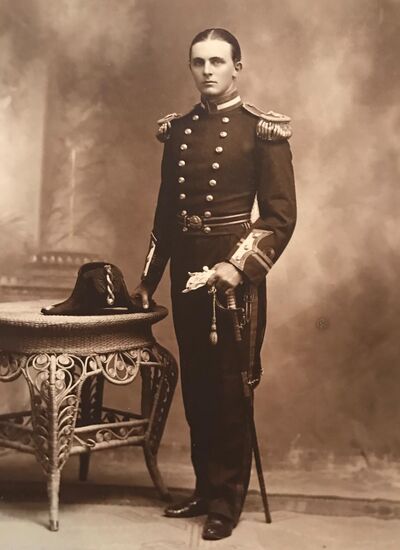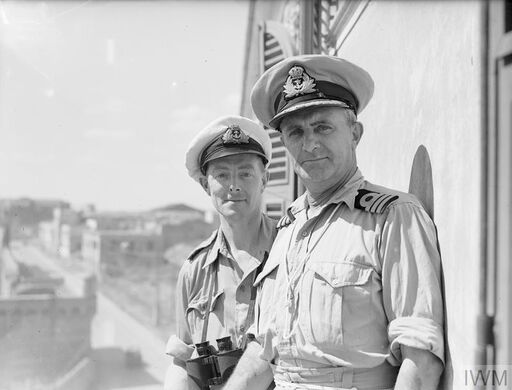Charles Stewart Lockhart
Commander (retired) Charles Stewart Lockhart, D.S.C., R.N. (19 November, 1889 – ) served in the Royal Navy.
Life & Career
Much of the detail within here is contributed courtesy of Edward Stewart-Lockhart.[1]
Lockhart was born in Reading, the son of Colonial official and Sinologist Sir James Stewart Lockhart, K.C.M.G.. David Norman Walter Joel was his brother in law. Lockhart listed a Major Lindsay Lloyd[?] as his guardian upon joining the Navy in 1905, as his parents were living in China at that time.[2]
He spent two and a half years in his first ship, the armoured cruiser King Alfred before being placed in the battleship King Edward VII on 19 January, 1909.[3]
Lockhart was promoted to the rank of Lieutenant on 1 October, 1912 and received a fourth class certificate as an Assistant Surveyor, which was upgraded to Third Class on 1 January 1914. Lockhart served in the battlecruiser Tiger from her commissioning in 1914 through 11 December, 1917, seeing action in her at the Battle of Jutland.[4]
On 1 March 1918, he was appointed to H.M.S. Sarepta.
Lockhart was promoted to the rank of Lieutenant-Commander on 1 October, 1920. He served in Mutine, Flinders and Iroquois.[5]
After a brief stint in command of Fitzroy, and in charge of her survey, he retired some time around 1926, making his way to Rangoon. He was promoted to the rank of Commander on 19 November, 1929.[6]
World War II
In 1940 he was commanding an experimental Mine Destruction Vessel, H.M.S. Corbrae. He later served as Beach Master and Naval-Officer-In-Charge at Anzio, and was awarded a D.S.C. for his work there. His citation for reads: "For outstanding courage, leadership, resource and determination during the assault on Anzio and in subsequent bombardments in support of the Army, and in maintaining an unbroken flow of supplies which accomplished the building up of the beach-head despite bombing, mining and bombardment by shore batteries."[7]
He was also Mentioned in Despatches, "[f]or leadership and skill in opening up the ports of Civita Vecchia and Piombino in co-operation with the U.S. Military Authorities", liaising with American engineers in doing so.
In September 1945, he was appointed in command of R.N.B. Braintree.[8]
See Also
Footnotes
- ↑ Email from great-grandson Ed Stewart-Lockhart, 20221228 and 20221229.
- ↑ Lockhart Service Record. The National Archives. ADM 196/56/256. f. 614.
- ↑ Lockhart Service Record. The National Archives. ADM 196/56/256. f. 614.
- ↑ Lockhart Service Record. The National Archives. ADM 196/56/256. f. 614.
- ↑ Lockhart Service Record. The National Archives. ADM 196/56/256. f. 614.
- ↑ Lockhart Service Record. The National Archives. ADM 196/56/256. f. 614.
- ↑ The London Gazette: (Supplement) no. 36634. p. 3565. 28 July, 1944.
- ↑ Lockhart Service Record. The National Archives. ADM 196/56/256. f. 614.

